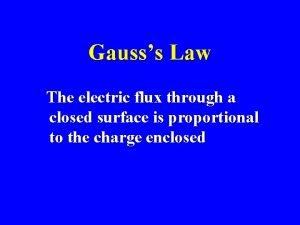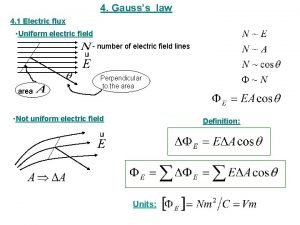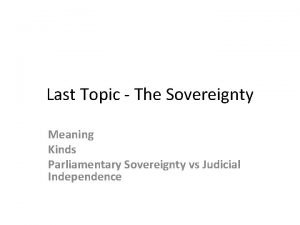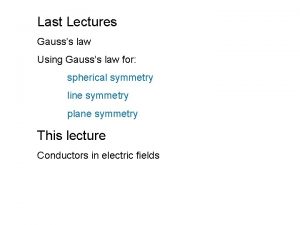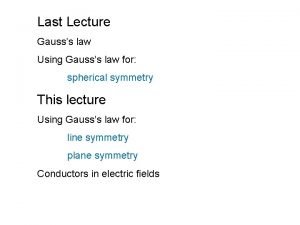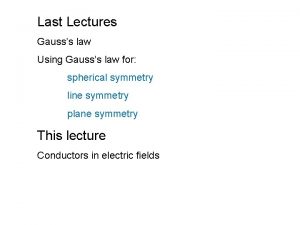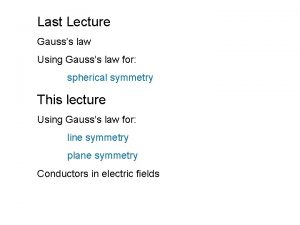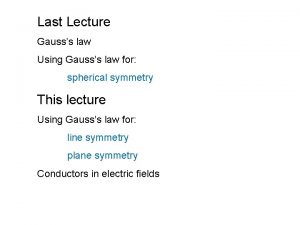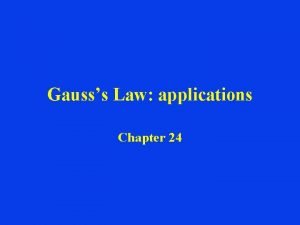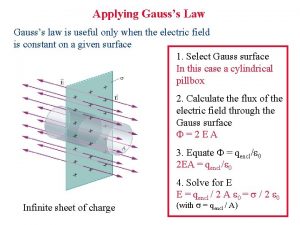TOPIC 3 Gausss Law 1 Introduction From last








- Slides: 8

TOPIC 3 Gauss’s Law 1

Introduction From last lecture: • Electric field strength is equal to the density of field lines • Number of lines starting on a charge is proportional to the charge Gauss’s Law relates flux (= flow of field lines) through a closed surface to total charge enclosed Very useful for calculating field, especially for symmetric charge distributions. 2

Electric Flux Consider surface, area A, in uniform field E Flux is field projected area = E A cos Can also consider this as area normal component of field. Define vector A, magnitude proportional to area, direction of normal to the surface. = E. A 3

For non-uniform field: Note: lines passing one way through surface give positive contribution to , other direction negative. Continuous lines net flux through closed surface = 0 4

Consider spherical Gaussian surface around point charge: By Coulomb’s Law: So What about a different shape surface? Net flux through combined dotted and dashed surfaces = 0. Flux through any surface surrounding Q is Q/ 0. 5

Gauss’s Law The net flux through any closed surface around a total charge Qtot is just Qtot/ 0. Using Gauss’s Law to determine the field: 1) Use the symmetry of the charges to determine the pattern of field lines. 2) Choose a Gaussian surface which is locally either parallel to E or perpendicular to it. 3) Where E is parallel to d. A, E is locally constant. 6

Example 1 Show that when an isolated conductor carries a charge, it must reside only on the surface. Example 2 Show that the field about a charged conducting sphere is identical to that about the same charge concentrated at the centre of the sphere. Example 3 A charge Q is distributed uniformly throughout an insulating sphere of radius R. What is the electric field at points (a) outside the sphere (b) inside the sphere? 7

Example 4 An infinite sheet carries a surface charge density . What electric field does it produce? Example 5 An infinitely long wire carries a linear charge density . How does the electric field it produces vary with distance from the wire? 8
